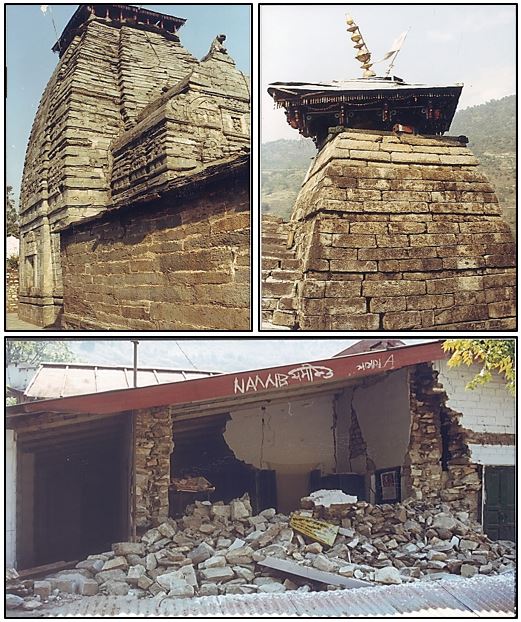NICEE Remembers the 1999 Chamoli Earthquake
on its 25th Anniversary
Twenty-five years ago, in the early hours of March 29, 1999, at 00:35:13.59 (local time), an earthquake of magnitude ~6.6 rocked the cities of Chamoli, Gopeswhar and Rudraprayg in Garhwal Himalayas, claiming about 100 lives and rendering 100,000 homeless. Most of the casualties occurred in poorly constructed dwellings of undressed stone masonry in mud mortar, which had weak and flexible diaphragms. Though well-constructed traditional stone-slate masonry houses performed rather satisfactorily, the majority of the structural damage was due to a lack of earthquake-resistant construction features.
Most importantly, the field survey indicated that the topography of the area and lateral homogeneity of underlying rocks had a significant impact on the extent and severity of the damage. Regions with ridges, changes in slope profiles, and lateral discontinuities in sub-surface layers were particularly hard hit. These conditions could generate local surface waves of higher frequency and amplitude, affecting the structures' performance. Ground motion recordings supported these findings, with motions at Gopeshwar, near the valley, having unusually rich low frequencies for near-field motions, while the ground motion recorded at Okhimath, situated on the hilltop, had rich high frequencies. Though the adverse impacts of such site conditions on structures' performance have been discussed in a qualitative manner, a quantitative assessment is necessary for structural design purposes.
A few reconnaissance reports and published articles about the earthquake effects and reconstruction program are listed below for further information.
Slide show recalling the aftermath of the Chamoli Earthquake
Reports on the Chamoli Earthquake:
- NICEE:
- Chamoli (Himalaya, India) Earthquake of 29 March 1999
The March 29, 1999 Earthquake at Chamoli, India- Science Direct:
- Revisiting the 1991 Uttarkashi and the 1999 Chamoli, India, earthquakes: Implications of rupture mechanisms in the central Himalaya
On the damage caused by the Chamoli earthquake of 29 March, 1999- Indian Society of Earthquake Technology:
- GeoScienceWorld:
- Indian Academy of Sciences (IAS):
- Asian Disaster Reduction Center (ADRC):
Pls visit the following pages on NICEE for some more aspects of Earthquake Engineering
-
E-book version of Earthquake Tips:
https://www.nicee.org/ebook/EQTips_Eng/ -
Model building codes:
https://www.nicee.org/IITK-GSDMA_Codes.php -
IITGN-World Bank Project on Seismic Codes:
https://nicee.org/IITGN-WB_Codes.php -
Earthquake Engineering Education:
https://www.nicee.org/npeee -
Confined Masonry Construction:
https://www.nicee.org/confinedmasonry.php
Durgesh C Rai
Coordinator,
National Information Center of Earthquake Engineering (NICEE)
IIT Kanpur
